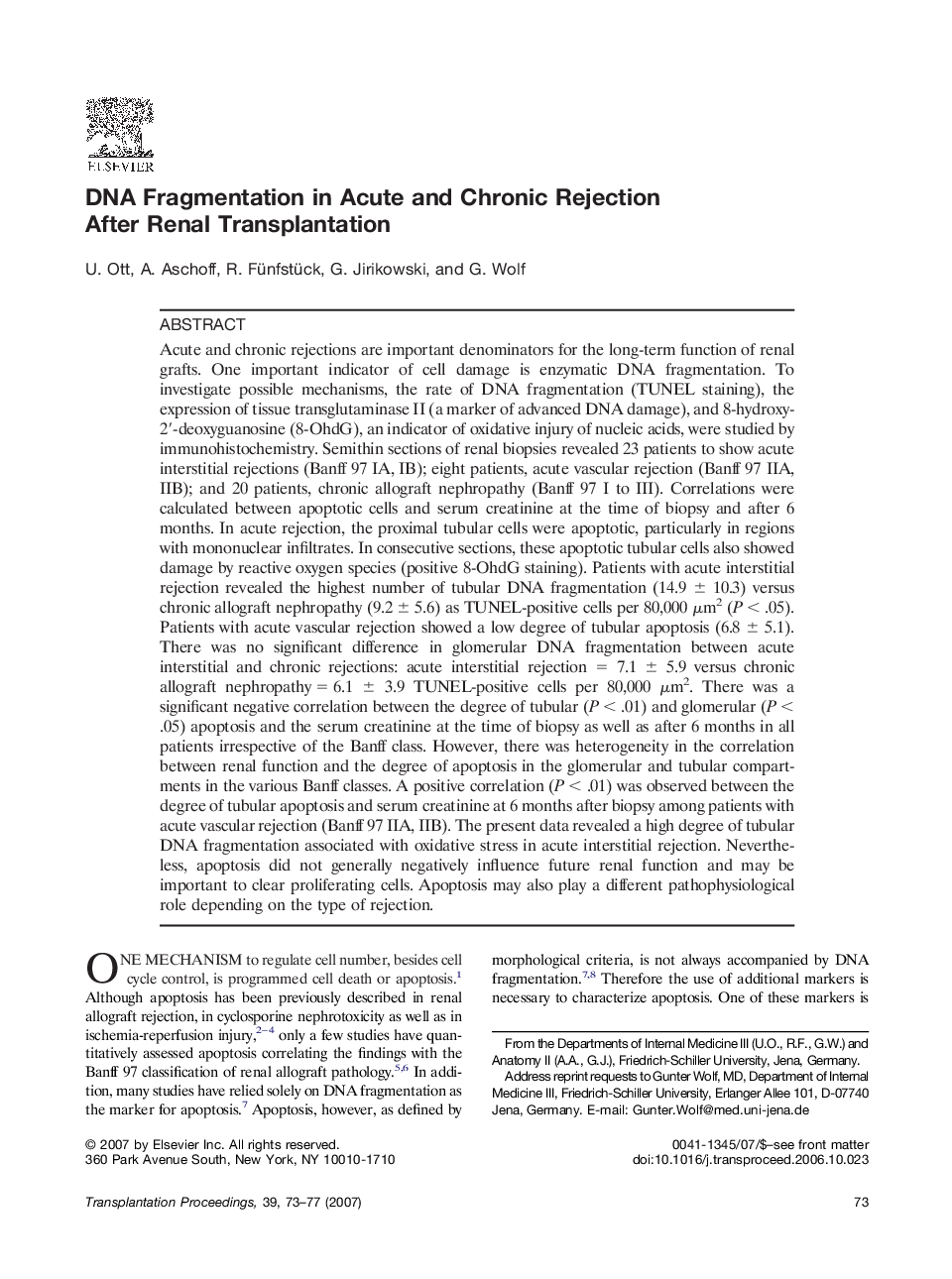| Article ID | Journal | Published Year | Pages | File Type |
|---|---|---|---|---|
| 4262914 | Transplantation Proceedings | 2007 | 5 Pages |
Acute and chronic rejections are important denominators for the long-term function of renal grafts. One important indicator of cell damage is enzymatic DNA fragmentation. To investigate possible mechanisms, the rate of DNA fragmentation (TUNEL staining), the expression of tissue transglutaminase II (a marker of advanced DNA damage), and 8-hydroxy-2′-deoxyguanosine (8-OhdG), an indicator of oxidative injury of nucleic acids, were studied by immunohistochemistry. Semithin sections of renal biopsies revealed 23 patients to show acute interstitial rejections (Banff 97 IA, IB); eight patients, acute vascular rejection (Banff 97 IIA, IIB); and 20 patients, chronic allograft nephropathy (Banff 97 I to III). Correlations were calculated between apoptotic cells and serum creatinine at the time of biopsy and after 6 months. In acute rejection, the proximal tubular cells were apoptotic, particularly in regions with mononuclear infiltrates. In consecutive sections, these apoptotic tubular cells also showed damage by reactive oxygen species (positive 8-OhdG staining). Patients with acute interstitial rejection revealed the highest number of tubular DNA fragmentation (14.9 ± 10.3) versus chronic allograft nephropathy (9.2 ± 5.6) as TUNEL-positive cells per 80,000 μm2 (P < .05). Patients with acute vascular rejection showed a low degree of tubular apoptosis (6.8 ± 5.1). There was no significant difference in glomerular DNA fragmentation between acute interstitial and chronic rejections: acute interstitial rejection = 7.1 ± 5.9 versus chronic allograft nephropathy = 6.1 ± 3.9 TUNEL-positive cells per 80,000 μm2. There was a significant negative correlation between the degree of tubular (P < .01) and glomerular (P < .05) apoptosis and the serum creatinine at the time of biopsy as well as after 6 months in all patients irrespective of the Banff class. However, there was heterogeneity in the correlation between renal function and the degree of apoptosis in the glomerular and tubular compartments in the various Banff classes. A positive correlation (P < .01) was observed between the degree of tubular apoptosis and serum creatinine at 6 months after biopsy among patients with acute vascular rejection (Banff 97 IIA, IIB). The present data revealed a high degree of tubular DNA fragmentation associated with oxidative stress in acute interstitial rejection. Nevertheless, apoptosis did not generally negatively influence future renal function and may be important to clear proliferating cells. Apoptosis may also play a different pathophysiological role depending on the type of rejection.
